
The Asilidae are the robber fly family, also called assassin flies. They are powerfully built, bristly flies with a short, stout proboscis enclosing the sharp, sucking hypopharynx. The name "robber flies" reflects their expert predatory habits; they feed mainly or exclusively on other insects and, as a rule, they wait in ambush and catch their prey in flight.

Dasypogoninae is a subfamily of robber flies in the family Asilidae. There are more than 60 genera and 520 described species in Dasypogoninae.
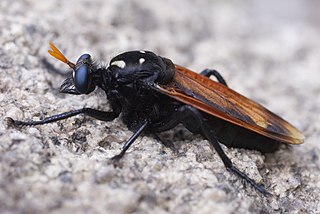
Prolepsis is an insect genus of mainly neotropical Diptera in the family Asilidae or robber flies.

Diogmites is a genus of mainly neotropical flies in the family Asilidae or robber flies.
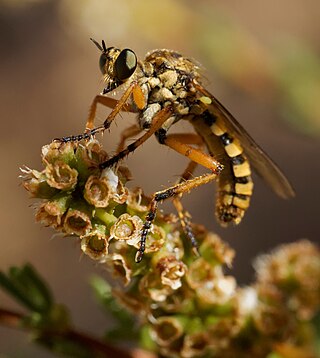
Stenopogoninae is a subfamily of robber flies in the family Asilidae. There are more than 70 genera and 740 described species in Stenopogoninae.

Neoitamus cyanurus, the common awl robberfly, is a species of 'robber fly' belonging to the family Asilidae.

Leptogastrinae is a subfamily of robber flies in the family Asilidae. There are more than 450 described species in Leptogastrinae.
Cyrtopogon lyratus is a species of robber flies in the family Asilidae.
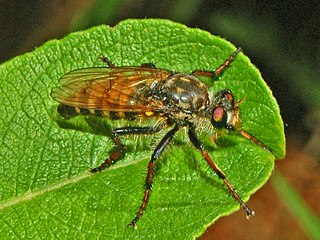
Cyrtopogon is a genus of robber flies in the family Asilidae. There are at least 120 described species in Cyrtopogon.

Stichopogoninae is a subfamily of robber flies in the family Asilidae. There are about 14 genera and at least 230 described species in Stichopogoninae.
Coleomyia is a genus of robber flies in the family Asilidae. There are about eight described species in Coleomyia.
Plesiomma is a genus of robber flies in the family Asilidae. There are at least 20 described species in Plesiomma.
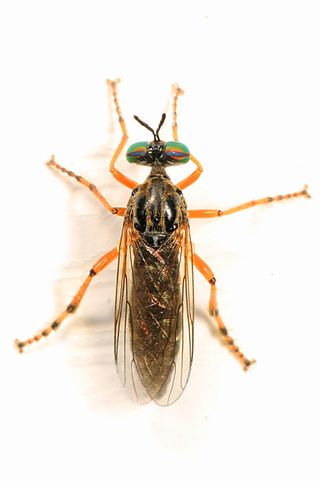
Taracticus is a genus of robber flies in the family Asilidae. There are about 16 described species in Taracticus.
Psilocurus is a genus of robber flies in the family of Asilidae. There are about 14 described species in Psilocurus.
Zabrops is a genus of robber flies in the family Asilidae. There are about eight described species in Zabrops.
Dasylechia is a genus of robber flies in the family Asilidae. There is one described species in Dasylechia, D. atrox.
Echthodopa is a genus of robber flies in the family Asilidae. There are at least four described species in Echthodopa.
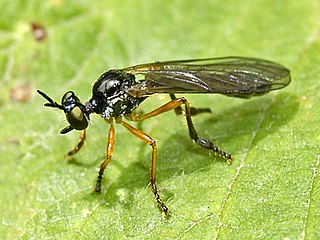
Dioctria bicincta is a species of robber fly classified in the subfamily Dasypogoninae of the family Asilidae.

Machimus setibarbus is a species of fly in the family Asilidae, the robber flies and assassin flies.

Choerades marginata is a species of robber fly found in Europe.














